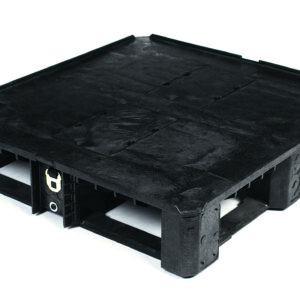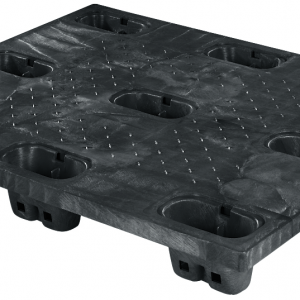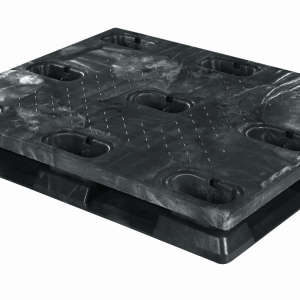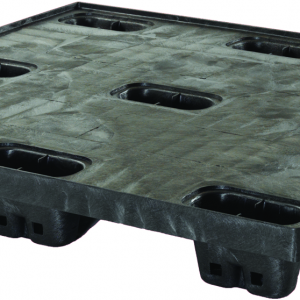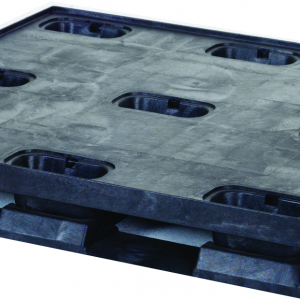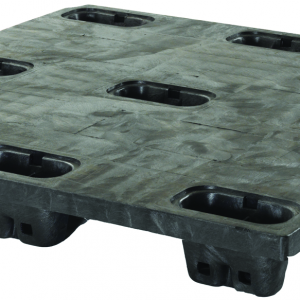Buckhorn Medium-Duty Pallets handle applications in the automotive, manufacturing, food and distribution industries. They are molded of structural foam to support heavy loads. Medium-Duty Pallets support dynamic loads between 1,500 lbs. and 4,000 lbs. depending on the model.
Features and Benefits
• Hundreds of round trips for lower overall cost-per-trip
• Nestable models feature nine reinforced feet for uniform load distribution
• Available in 6-rail configuration
• Solid or ventilated deck styles
• Four-way entry accommodates forklifts and pallet jacks
• Superior resistance to moisture, most chemicals and temperature extremes
• Use with temperatures of -20˚ to 120˚ F
• Customization and identification options available
• Backed by a one-year limited warranty
• 100% recyclable HDPE
Pallet Racking
Some Buckhorn pallets are suitable for storage in racks – but not all racks are created equal. To determine pallet capacity limitations, it is important to understand the different pallet rack types available, the orientation of the pallet in the rack and how the pallet will be supported. Please review this list of rack types and consult Buckhorn to select the best pallet to fit your specific application.
• Edge Rackable (Unsupported) – When racked, the pallet gets support only on two edges of the pallet with no central support. This could be a drive-in rack or a standard/structural rack with no center support. Different capacities apply depending on the rails and orientation of the pallet in the rack. Only select pallets are suitable for this truck edge-rack storage.
• Standard Rack (Partially Supported) – When racked, the pallet gets support on the front and back edge, as well as central support from a 2” x 4” wood plank or other support positioned perpendicular to the rails.
• Not Rackable (Full Support) – Lightweight and medium-duty pallets are designed only for floor loading or to stack on other pallets. These pallets are not recommended for racking unless the rack system is fully supported by wire/mesh or other decking to provide equivalent support to what the pallet would receive on the floor.
Did You Know…?
Wooden pallets chip away your profits:
• Easily splinter and break – high replacement costs
• Nails and splinters damage products and injure workers
• Short life cycle – fewer round trips than plastic pallets
Showing all 8 results
-
PM32300632
32" x 30" x 6" | Stackable, 1" LipRead more -
PM48400600
48" x 40" x 6" | NestableRead more -
PM48400633
48" x 40" x 6" | Rackable, 6-RailRead more -
PM48450600
48" x 45" x 6" | NestableRead more -
PM48450633
48" x 45" x 6" | Rackable, 6-RailRead more -
PM48480600
48" x 48" x 6" | NestableRead more -
PM48480633
48" x 48" x 6" | Stackable, 6-RailRead more -
TM32300300
32" x 30" x 3" | Structural Foam Top CapRead more

